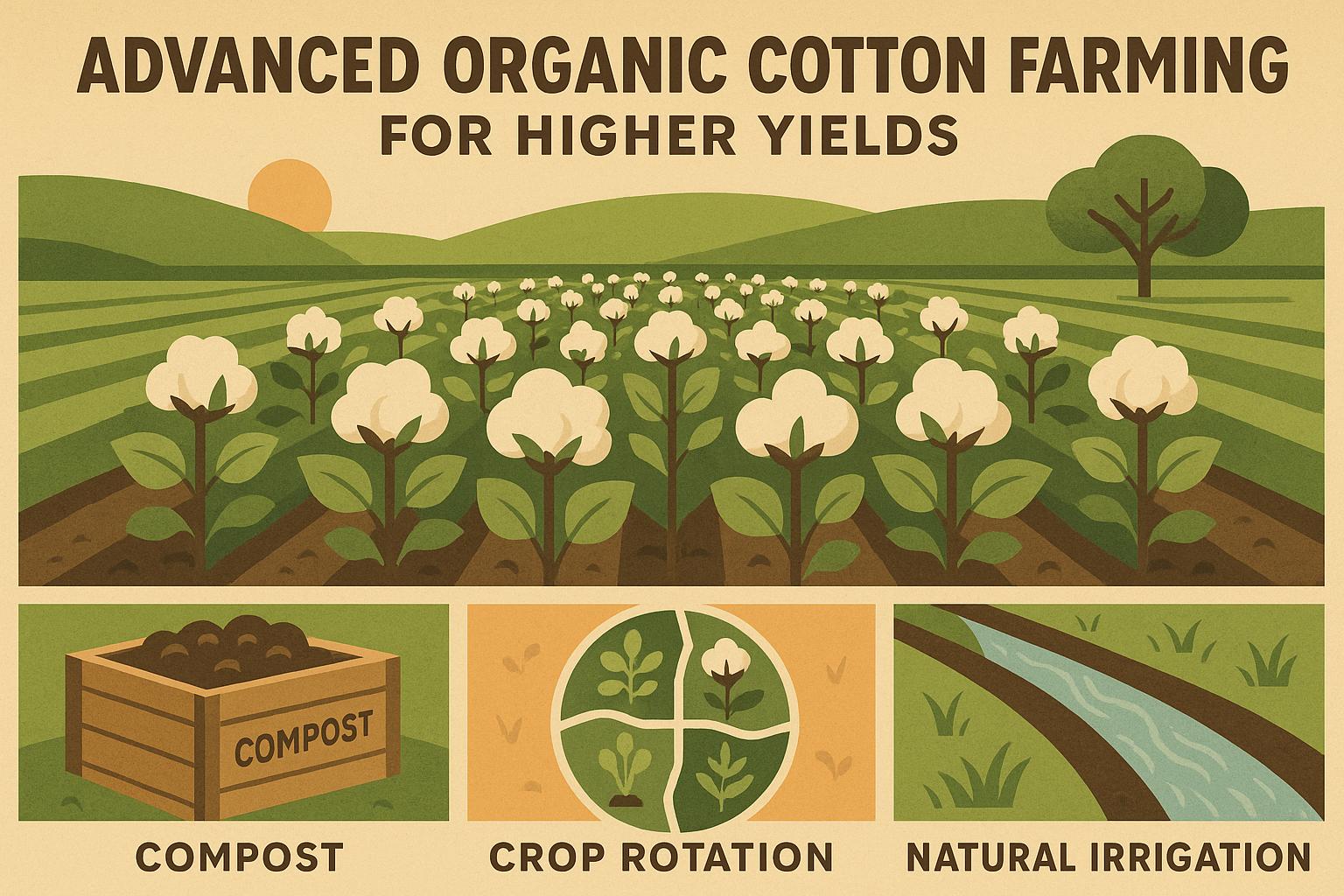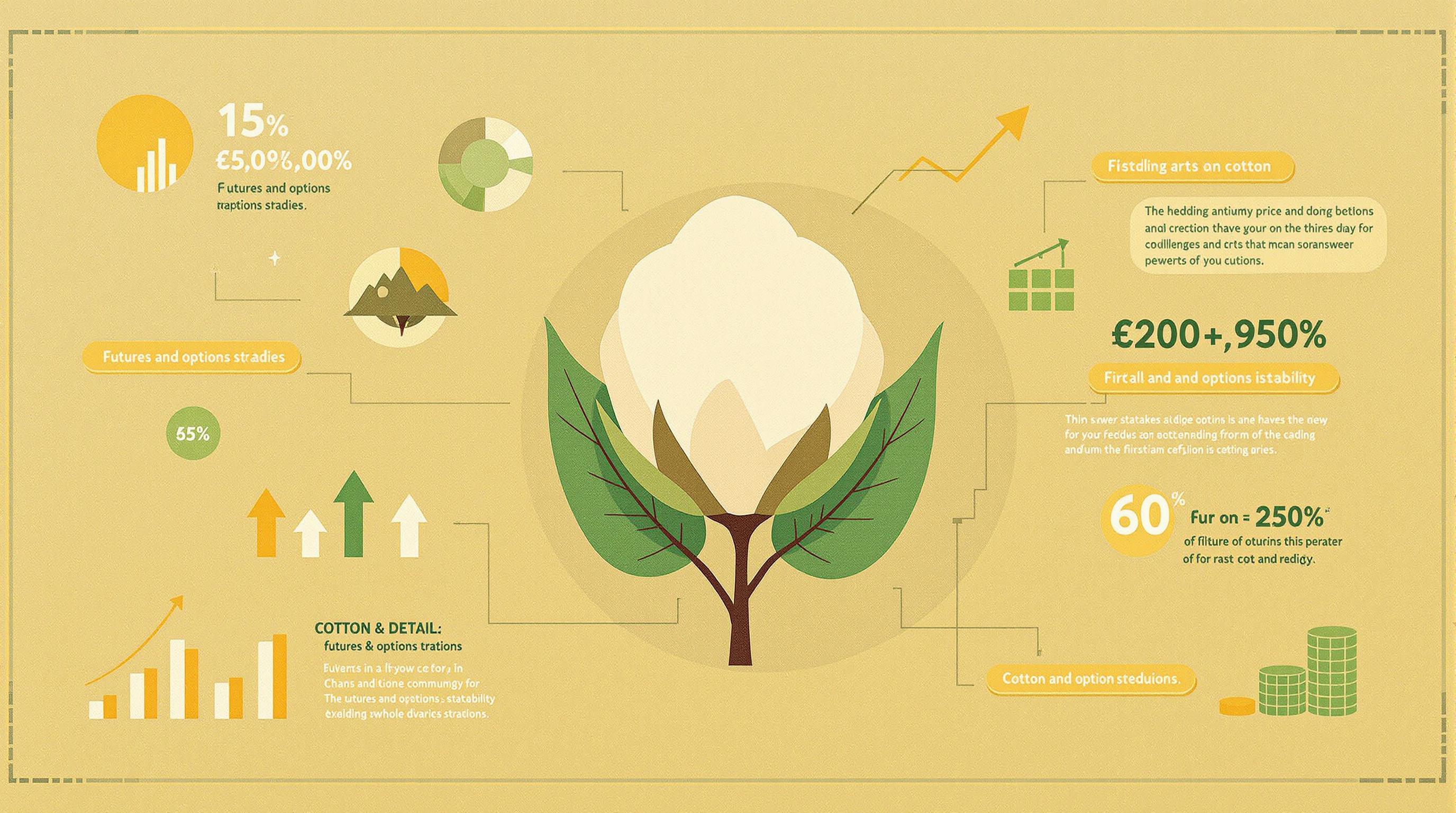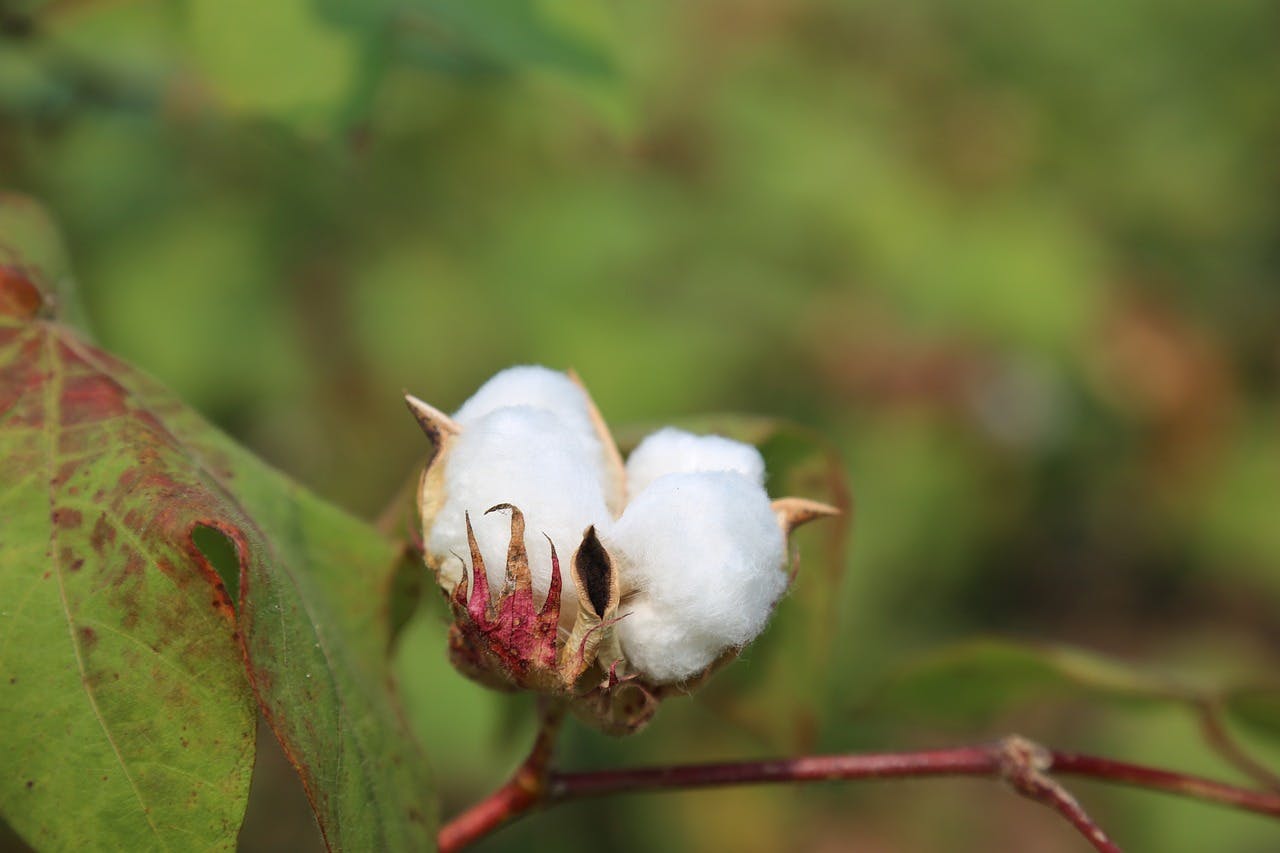Why Consider Cover Crops in Cotton Farming?
As a cotton farmer with years under your belt, you've likely seen cycles of soil degradation, fluctuating yields, and the constant battle against erosion and nutrient loss. Cover crops in cotton farming can be a powerful ally in addressing these challenges, offering a low-input way to rebuild your land's productivity over time. Unlike cash crops, cover crops are planted primarily to protect and enrich the soil rather than for harvest, but their benefits extend far beyond the ground—they can enhance your overall operation's resilience.
In regions where cotton is king, like the Southeast or Texas High Plains, integrating cover crops isn't a new fad; it's a proven strategy backed by decades of agronomic research. For instance, studies from university extension services show that farms using cover crops in cotton farming can see soil organic matter increase by 0.5-1% over several seasons, leading to better water retention and reduced fertilizer needs. This isn't about overhauling your system overnight; it's about making incremental changes that pay off in higher lint quality and lower costs.
If you're already rotating with peanuts or corn, think of cover crops as the next layer—bridging those gaps between harvests to keep your fields active and productive.
Selecting the Right Cover Crops for Your Cotton Operation
Choosing the best cover crops in cotton farming starts with understanding your soil type, climate, and specific challenges. Seasoned growers know that no one-size-fits-all approach works, especially with cotton's demands for well-drained, fertile ground. Legumes like crimson clover or hairy vetch are popular for their nitrogen-fixing abilities, potentially adding 50-100 pounds of nitrogen per acre naturally. This can cut your synthetic fertilizer bill while improving boll set in the following cotton cycle.
Grasses such as cereal rye or oats excel at scavenging leftover nutrients, preventing leaching in sandy soils common to many cotton belts. They also build root structures that combat compaction, a silent yield killer that can reduce cotton stands by 10-20% in heavy traffic areas. For mixed systems, consider brassicas like radishes or turnips, which break up hardpans with their deep taproots and suppress weeds through allelopathic effects.
Key factors to weigh:
- Soil pH and Texture: Acidic soils benefit from lime-tolerant covers like rye, while clay-heavy fields might prefer radishes for aeration.
- Pest and Disease History: Avoid covers that host similar pests as cotton, such as vetch if nematodes are an issue—opt for nematode-suppressive options like marigolds instead.
- Termination Ease: Select species that winter-kill in colder zones or respond well to herbicides for smooth transition to cotton planting.
Trial small plots first—perhaps 10-20 acres—to monitor how these covers interact with your cotton varieties. Over time, you'll refine selections based on local performance, much like dialing in herbicide rates for resistant pigweed.
Timing and Planting Techniques for Cover Crops in Cotton Farming
Timing is everything in cover crops in cotton farming, especially to avoid delaying your cotton planting window. For most U.S. cotton regions, seeding covers immediately after harvest—typically October to November—allows establishment before winter dormancy. This "relay interseeding" into standing cotton residue minimizes erosion during off-season rains.
Use no-till drills or broadcast seeders for efficient planting, aiming for 20-40 pounds per acre depending on the mix. In drier areas, incorporate light irrigation if needed to ensure germination, but avoid overwatering to prevent fungal issues. Come spring, terminate covers 2-4 weeks before cotton planting to allow residue decomposition and reduce allelopathic risks to seedlings.
Advanced techniques for efficiency:
- Aerial Seeding: Fly on covers into maturing cotton for minimal disturbance, ideal for large operations.
- Strip-Till Integration: Plant cotton directly into terminated cover strips, preserving moisture and structure.
- Multi-Species Mixes: Combine 3-5 species for diversified benefits, but monitor seeding rates to prevent dominance by one type.
These methods assume you're comfortable with variable-rate equipment; if not, start simple and scale up. Challenges like poor establishment in dry falls can be mitigated by choosing drought-tolerant varieties or adjusting seeding depths to 0.5-1 inch.
Boosting Soil Health with Cover Crops in Cotton Farming
The core value of cover crops in cotton farming lies in their ability to revitalize soil, turning marginal ground into high-yielding assets. Living roots from covers feed soil microbes year-round, increasing organic matter and aggregate stability. This translates to better tilth, reducing the energy needed for root penetration and improving cotton's access to water and nutrients during boll fill.
In terms of water management, covers act as a sponge, holding up to 1-2 inches more moisture in the profile. For irrigated cotton, this means fewer cycles and potential savings of 10-20% on water bills. Non-irrigated farms benefit from reduced runoff, preserving topsoil that might otherwise erode at rates of 5-10 tons per acre annually in exposed fields.
Nutrient cycling is another win: Covers capture excess nitrogen from previous applications, releasing it slowly as they decompose. This can enhance cotton's nutrient uptake efficiency, potentially boosting yields by 5-15% in nutrient-stressed soils. Monitor with soil tests to adjust inputs—over time, you might reduce phosphorus applications as covers improve availability.
Potential drawbacks include initial costs (seed at $20-50/acre) and residue management, but these are offset by long-term gains. Seasoned farmers often report healthier cotton plants with fewer stress symptoms, like wilting during heat waves.
Pest and Weed Suppression Benefits of Cover Crops in Cotton Farming
Cover crops in cotton farming aren't just soil builders—they're natural allies in integrated pest management. Dense cover canopies smother weeds, reducing germination of problem species like Palmer amaranth by 50-70%. This cuts herbicide reliance, a boon amid rising resistance issues.
For pests, certain covers disrupt life cycles: Rye releases compounds that deter armyworms, while brassicas trap nematodes, lowering populations that can slash cotton yields by 20-30%. Beneficial insects thrive in diverse cover habitats, providing free biocontrol against aphids and thrips.
Strategies to maximize suppression:
- High-Biomass Covers: Aim for 4,000-6,000 pounds of dry matter per acre to outcompete weeds.
- Roller-Crimping: Mechanically terminate covers to create a mulch layer that blocks light and conserves moisture.
- Scouting Integration: Use covers as early indicators of pest pressure, adjusting thresholds for cotton sprays.
While covers rarely eliminate pests entirely, they complement your existing program, potentially reducing insecticide applications by 1-2 per season. If root-knot nematodes are prevalent, pair with resistant cotton varieties for compounded effects.
Economic and Sustainability Impacts of Cover Crops in Cotton Farming
Integrating cover crops in cotton farming makes economic sense for long-haul operators. Initial investments yield returns through higher cotton quality—better micronaire and uniformity from healthier soils—and reduced inputs. Farms report 10-20% fertilizer savings after 3-5 years, plus premium pricing for sustainably grown lint in eco-conscious markets.
Sustainability-wise, covers sequestering carbon at rates of 0.5-1 ton per acre annually, aiding compliance with environmental programs. They also mitigate erosion, protecting waterways from sediment and nutrient runoff—a growing concern in cotton watersheds.
Challenges: Cash flow from upfront costs and potential yield dips in transition years (typically 2-5% initially). Mitigate with cost-share programs from NRCS, which often cover 50-75% of seeding expenses.
Over time, diversified systems buffer against market volatility, allowing you to weather low cotton prices by maintaining soil capital.
Overcoming Common Hurdles in Adopting Cover Crops in Cotton Farming
Even experienced growers face barriers with cover crops in cotton farming. Residue buildup can cool soils in spring, delaying cotton emergence in northern belts—counter this with earlier termination or warmer-adapted covers.
Establishment failures in dry conditions? Inoculate legumes for better nodulation and use crimped rollers to retain moisture. Weed escapes happen if termination timing slips, so calibrate equipment precisely.
Build a support network: Consult extension agents or peer groups for region-specific advice. Start conservatively—cover 20-30% of acres—to learn without risking the whole farm.
Long-Term Strategies for Success with Cover Crops in Cotton Farming
To fully leverage cover crops in cotton farming, adopt a multi-year mindset. Rotate cover species to avoid building tolerances, and integrate data from yield monitors to quantify benefits. Advanced growers use soil sensors to track improvements in real-time, adjusting mixes accordingly.
Collaborate with buyers, emphasizing traceability—covers enhance your story for premium contracts. Ultimately, this approach positions your farm as resilient, productive, and forward-thinking.
Actionable Takeaways for Implementing Cover Crops in Cotton Farming
Ready to incorporate cover crops in cotton farming? Here's a practical roadmap:
- Assess Your Fields: Soil test for baselines and identify key issues like compaction or low organic matter.
- Choose and Source Seed: Select 2-3 species based on goals; buy certified seed for purity.
- Plan Planting and Termination: Schedule around cotton harvest; use burndown herbicides judiciously.
- Monitor and Adjust: Track soil metrics and cotton performance annually to refine.
- Seek Incentives: Apply for USDA programs to offset costs and build equity.
By embracing cover crops in cotton farming, you'll invest in your land's future, ensuring robust yields for generations. For nutrient ties, see our Nutrient Management Strategies for Cotton Farming: Maximizing Yield and Sustainability.
In the end, cover crops in cotton farming empower you to farm proactively, turning challenges into opportunities for growth.
Related Blog Posts
- Improving Soil Health in Cotton Farming: Essential Strategies for Long-Term Productivity
- Integrated Weed Management in Cotton Farming: Strategies for Effective Control
- Cotton Crop Rotation Practices: Enhancing Soil Health and Yield Sustainability
- Advanced Organic Cotton Farming Techniques for Higher Yields


